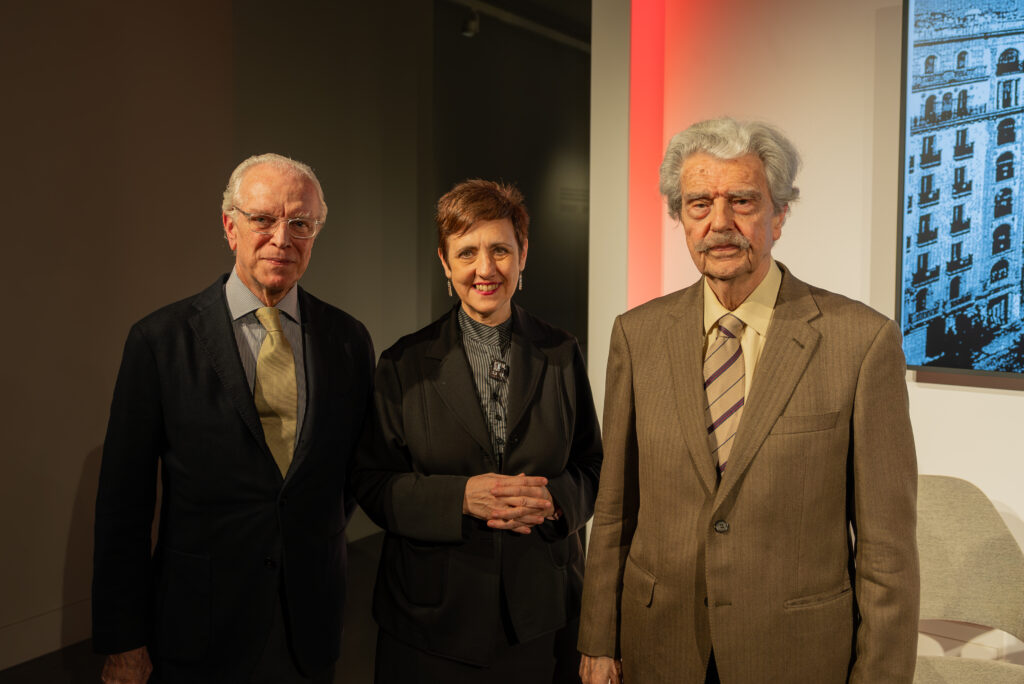The work of Enric Sagnier in Barcelona is more than significant in the city of Barcelona, some of its most emblematic buildings are the Port Customs, the Palace of Justice, the Royal Maritime Club, the Rodolf Juncadella house, or the Garriga Nogués house, current headquarters of the Museum of Forbidden Art, just to cite a few examples. Enric Sagnier was the most prolific architect of Barcelona in the late nineteenth and early twentieth centuries.

Precisely, to vindicate the legacy of Enric Sagnier y Villavecchia, last April 10 we had the journalist and essayist Lluís Permanyer, who introduced by Antonio Sagnier, businessman and grandson of the architect, offered a portrait of the figure of Enric Sagnier.
Lluís Permanyer began by talking about the banker Rupert Garriga Miranda, who commissioned what would be called Casa Garriga Nogués to Enric Sagnier in 1899: “The result was an imposing, elegant and rotund house, with outstanding corbels by Eusebi Arnau, Rigalt’s glasswork, the central skylight…. Enric Sagnier’s style is different from that of Modernism, he was influenced by his personal style, polite, respectful, punctual, knew school, kind, social, honest, generous. Perhaps for all these reasons, at the age of 28 he already designed the Palau de Justícia”.

In Permanyer’s opinion there are three stellar moments in the architecture and development of Barcelona: the times of Pedro III, with the second Gothic wall intact until 1854; the Sardà plan and the birth of the Eixample and the 1992 Olympic Games.
“Gaudí was a rural man, when he spoke he said males and females; and the clients did not consider Gaudí easy to deal with. Marañón used to say I am a junkyard of my time, Sagnier was too, he didn’t waste time and adapted to the client’s needs without kneeling down. He had an exquisite treatment with clients and with those who worked on site, and the word spread and many people commissioned him, being the most prolific of the modernist artists, he made 482 buildings. In Passeig de Gràcia 9 houses, in the Diaonal 11, in Rambla Catalunya 7. He had a great openness of compass, he did a great variety of things: spas, hotels, schools, banks, bourgeois houses, religious architecture, farms, cheap houses, warehouses… Nothing is mean as Papasseit used to say, and whatever Sagnier did, he maintained a minimum level and category. He had an elegant European style. It is fortunate for Barcelona to have had Enric Sagnier”, argued Lluís Permanyer.
You can follow the entire conversation through the Museu de l’Art Prohibit’s Youtube channel:

